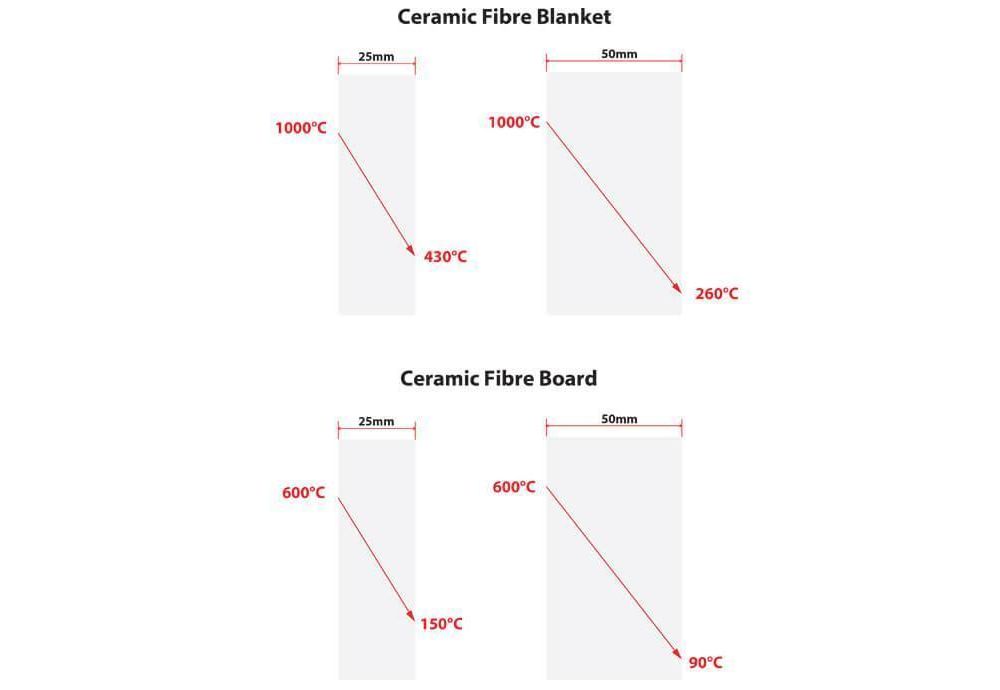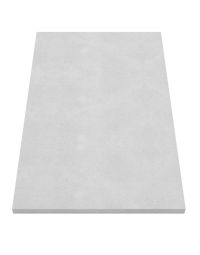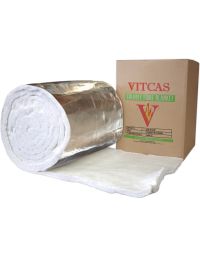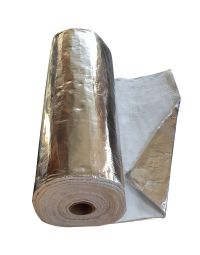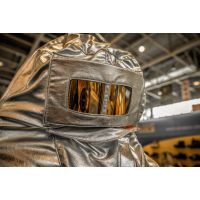Lithium-ion batteries power a wide range of modern technologies, from smartphones to electric vehicles (EVs). However, their widespread use has highlighted safety concerns, particularly the risk of thermal runaway-a chain reaction where internal overheating leads to potential ignition and intense, hard-to-extinguish fires.
Recent trends show a rise in lithium-ion battery fire incidents. In the UK alone, fire services reported a 46% increase in such fires in 2023 compared to the previous year, involving devices like e-bikes, e-scooters and EVs. This underscores the urgent need for advanced safety measures to manage these risks effectively.
How Refractory Materials Disrupt the Chain Reaction
Thermal runaway occurs when a lithium-ion battery experiences damage or a short circuit, triggering a feedback loop of heat and chemical reactions that can lead to a fire or explosion. In electric vehicle (EV) battery packs, which consist of numerous small cells wired together, an issue in one cell can quickly spread to the entire pack if not properly contained.
Refractory materials play a vital role in mitigating thermal runaway by providing high heat resistance and acting as physical barriers to contain and suppress the spread of heat and flames. These materials enhance fire safety by slowing the propagation of thermal runaway, giving occupants valuable time to evacuate the vehicle.
While no technology can completely prevent thermal runaway, the integration of refractory materials into EV and industrial battery systems significantly improves fire containment and thermal management. This article explores key refractory solutions designed to enhance lithium-ion battery safety and reduce the impact of thermal runaway in electric vehicles and industrial storage applications.
Key Refractory Solutions for Lithium Battery Fireproofing
Calcium Silicate Insulation Board
Application: Vitcas Calcium Silicate Board is excellent for lining battery compartments in EVs due to its heat-resistant and insulating properties. This insulation board can endure high temperatures up to 1100°C / 1830°F and can act as a robust thermal barrier.
Benefits:
- These boards enhance thermal stability by preventing heat propagation between cells, thereby improving safety and extending battery lifespan in high-temperature environments.
- The fireplace construction board provides effective thermal insulation, preventing excessive heat transfer and enhancing battery safety.
Biosoluble Blanket with Aluminium Foil
Application: Vitcas Biosoluble Blanket with Aluminium Foil serves as a thermal barrier in EV battery systems. The biosoluble fibre core provides insulation and extreme temperature resistance, while the aluminium foil reflects radiant heat, making it suitable for placement between cells or as an outer layer for battery packs.
Benefits:
- Withstands high temperatures up to 1200°C / 2190°F and prevents heat propagation during thermal runaway.
- Aluminium foil enhances heat reflection and containment.
- Lightweight, easy to install and environmentally friendly, ensuring effective thermal management without adding significant weight.
Aluminium Coated Insulation
Application: Vitcas Aluminium Coated Insulation Felt is ideal for wrapping EV battery packs or individual cells, providing an additional layer of thermal protection to contain heat and prevent thermal runaway. The aluminium foil layer acts as an additional protective shield which reflects radiant heat.
Benefits:
- Reduces heat transfer between cells and surrounding components.
- Lightweight and flexible, enabling easy application in compact battery compartments.
- Enhances safety by acting as a high-temperature thermal shield up to 550°C / 1022°F (while the heat resistance of the aluminium foil coating is 300°C / 572°F).

Fireproofing Lithium Batteries in Industrial Storage Facilities
In industrial settings such as factories and warehouses, fireproofing lithium-ion batteries requires a range of refractory solutions:
Calcium Silicate Insulation Board
Application: Vitcas Calcium Silicate Insulation Board is perfect for lining walls, floors and ceilings of lithium battery storage facilities, creating a heat-resistant and durable barrier for fire protection.
Benefits:
- Provides excellent thermal insulation, reducing heat transfer between stored batteries.
- Retains structural integrity under high temperatures reaching 1100°C / 1830°F, ensuring long-term reliability.
- Lightweight and simple to install, suitable for custom storage designs.
Biosoluble Insulation Blanket with Aluminium Foil
Application: Vitcas Biosoluble Blanket with Aluminium Foil is tailored for wrapping and isolating individual lithium battery packs, offering superior thermal insulation and containment within storage units.
Benefits:
- Forms a high-temperature-resistant barrier up to 1200°C / 2190°F, isolating battery packs and limiting heat propagation.
- The aluminium foil layer reflects radiant heat, enhancing containment and thermal management.
- Lightweight, flexible and easy to apply, ensuring efficient storage configurations.
Aluminium Coated Insulation
Application: Vitcas Aluminium Foiled Felt is ideal for wrapping battery compartments or entire storage units, serving as an effective radiant heat shield and thermal insulator. The insulation felt is resistant up to 550°C / 1022°F, while the aluminium layer resists up to 300°C / 572°F.
Benefits:
- Combines robust thermal insulation with radiant heat reflection to reduce heat buildup.
- Flexible and easy to install, adapting to various storage configurations.
- Lightweight and durable, providing an added layer of thermal protection for lithium battery storage systems.
Pro Tip: Proper compartmentalisation within storage units limits the spread of heat and flames between batteries. This approach ensures robust fireproofing, enhances safety for personnel and equipment and reduces the risk of fire-related damage in lithium-ion battery storage areas.
Protecting Against Thermal Runaway in EVs
Thermal Barriers
For an integrated approach, combine Biosoluble Blanket with refractory linings (e.g. Aluminium Coated Flue Wrap) to create thermal barriers in battery compartments. These thermal barriers help reduce heat transfer between cells, providing occupants with additional time to safely evacuate the vehicle or storage facility in the event of a lithium-ion battery fire.
Sealing Gaps
Proper sealing prevents the spread of lithium fires within the battery pack. New innovative solutions focus on creating a sealed box that is waterproof and prevents short circuits. This involves careful consideration of the battery pack sealing surface, which needs to align with the box structure and sealing ring. To achieve this, precision machining of the upper cover and lower bottom of the battery box is crucial. Additionally, applying a sealant like Vitcas CFA Adhesive to jointed metal pieces and using compression seals from appropriate materials like EPDM rubber help to maintain an airtight and heat-proof thermal barrier.

Emerging Trends in EV Safety Design
Manufacturers are increasingly incorporating innovative materials into battery safety designs, including:
Compression Pads:
- Compression pads provide structural support and fire protection for pouch cells. They maintain thermal and electrical connections in lithium-ion battery packs while allowing for expansion during charging or extreme temperatures. Research shows that applying low to medium pressure (0.08 MPa to 0.4 MPa) can extend battery life by optimising ageing behaviour. When combined with thermal-resistant, non-combustible layers, compression pads also enhance safety by insulating against thermal runaway-a critical feature in large EV battery packs prone to overheating. This added protection helps mitigate risks while safeguarding vehicle occupants.
Encapsulating Foams:
- Encapsulation foams provide lightweight thermal insulation and structural integrity for cylindrical cell packs. They protect battery cells from shock, reduce heat transfer and help prevent thermal runaway. Common materials include silicone for high-temperature resistance, epoxy for strong bonding and polyurethane for cost-effective, softer insulation, each chosen based on specific performance needs.
Conclusion: Building a Safer Future for Electric Vehicles
Advances in refractory materials are transforming EV battery safety by addressing the risks of lithium-ion battery fires. Solutions such as biosoluble blanket, fireplace construction board and aluminium flue wrap enable EV manufacturers to create more robust and secure battery systems.
This refractory, integrated approach enhances thermal management and battery safety, promoting trust in EV technology and supporting sustainable transport. By integrating cutting-edge safety measures, the EV industry is setting new standards and paving the way for a greener, safer future in transport.








